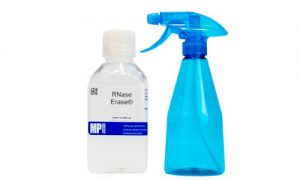RNA Isolation
Why Is It Hard to Isolate RNA?
Isolation of RNA from your samples is not easy because of the reactive hydroxyl groups (C-OH) in the deoxyribose sugar. The reactive hydroxyl group make the RNA not stable, especially under alkaline condition. Besides the low stability of RNA, the presence of RNases in the environment is also another challenge. RNases are difficult to be removed or destroyed completely and they commonly cause headache to the scientist during the isolation of RNA.
Due to the mentioned reasons, it is hard to isolate the RNA from your samples. However, in this blog, we are going to talk about the 4 simple tips for the successful RNA Extractions.
4 Tips for the Successful RNA Isolation
Tips 1: Prevent RNase Activity
As mentioned, RNase is abundant in the environment. Before you start your benchwork, ensure that the RNase on your bench, glassware and plasticware is removed with RNase Erase. Moreover, you have to process your sample as soon as possible after harvest and use Monarch DNA/RNA Protection Reagent to preserve your RNA from damage. Again, ensure that your working environment is NUCLEASE FREE!
Tips 2: Do Not Exceed The Recommended Input Amounts
Optimize the buffer volume according to the recommended input amounts of your sample. Too much volume sample lead to inefficient lysis and cause the clog of the column. For the guidance of the sample input amounts, please visit Monarch RNA Inputs.
Tips 3: Ensure You Homogenize/Disrupt Your Sample Properly
Improper homogenization/disruption of your samples cause less RNA yield. This is because not all RNA is released if the samples are not homogenized/disrupted properly.
Tips 4: Ensure Proper gDNA Removal
To prevent gDNA contamination in your sample, you can remove the gDNA using gDNA removal column and subsequent on-column DNase I treatment. Alternatively, you can employ off-column DNase I treatment.
Conclusion
RNA isolation is not easy due to the factors mentioned earlier in this blog. However, we can increase the success rate of RNA isolation with the 4 mentioned tips here. Hopefully, they can help you and good luck with your research!




